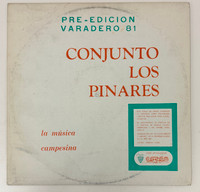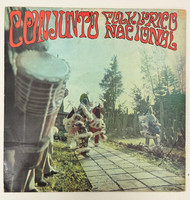- Travel
-
Exhibits
- La Portada Cubana
- Immortal Cuba: Artists Take on Their Heroes
- Seattle Poster Exhibit
- Sandra Dooley & Alejandrina Cué
- The Art of Wayacón
- Cuban Folk Art
- Cuba In Black And White
- 25 Years of Cuban Art Space
- Summer Folk Art Expo
- ¡SPRING AWAKENING FROM CUBA!
- Celebrating The Art Of Cuban Women
- Celebrating Paper, Affordable Art from Cuba
- Art of the Revolution
- Outsider Art
- Lost and Found
- En la lucha: Celebrating Cuban Women and Their Art
- Cuban Art Stash
- 100 Fires: 5 Cienfuegos Artists' Work on Paper
- Waya + Monte! Magic Realism in Cienfuegos
- Viva Cuba Viva! Poster Show
- Cultivando Sueños
- Black Lives Matter in Cuba Jan 9-March 27
- Leandro Soto: Crónicas visuales
- Cuban Canvas
-
Archive
- Global Reflection 2018: Spirit and Community
- Exhibit in the cloud: Contemporary Works on Paper
- MADE IN CUBA! MINNEAPOLIS EXHIBIT
- Cuban Posters and Photography from CCS collection
- AUTUMN SALE! Sept/Oct 2017
- SPRING ARTS AND CRAFT SALE
- Vuelo Directo/Non Stop: Alberto & Alejandro Lescay
- The Many Faces of Fidel
- Somos
- Made in Cuba!
- The US empire in Cuban graphics
- Made in Cuba/Seattle exhibit
- Entre Nos
- Looking Back
- Cuban Art Space
- Membership/Donate
- About Us
- Cuba News
-
Orquesta Aragón is one of Cuba's most legendary and enduring charanga orchestras, founded in 1939 in Cienfuegos by Orestes Aragón Cantero. The orchestra became one of the most important groups in Cuban popular music history, pioneering the charanga format (flute, violins, piano, bass, timbales, and güiro) and playing a crucial role in the development of cha-cha-chá, mambo, and other Cuban dance rhythms. By the time of this recording, Orquesta Aragón had achieved international fame and remained one of Cuba's premier musical ensembles under the revolutionary government.
This album features classic Cuban dance music including "Calle 22" (Mambo cha by Rolando Vergara), "Que viva el cha cha cha" (Danzón cha by Richard Egües), "Noche y día" (Bolero by Hymie Jauman), "Frente a la verdad" (Bolero by Arturo Alonso), "Nuestras penas" (Mambo cha by Andrés Castillo), "No eres comprensible" (Bolero cha by Rafael Lay), "De la opera al chachachá" (Chachachá by Julio César Fonseca), "Besitos con mozancha" (Mambo cha by Alberto Hernández), "Repicando bata" (Mambo cha by Alberto Hernández), and "Blanca Nieves-Grandeza de alma" (Bolero by Rafael Ortiz, featuring Francisco Olivera).
The cover design is a stunning example of Cuban pop art—a brilliant two-color composition in electric blue and vibrant orange against a pale gray-blue background. The design features high-contrast silkscreened portraits of the orchestra members: five faces at the top (showing musicians in sunglasses and hats) and their instruments (trumpets and other brass) at the bottom, creating a mirror composition. The word "ARAGÓN" appears twice in bold black letters, inverted/mirrored to create visual symmetry. Playing card suit symbols (clubs) with the letter "A" appear in the corners, suggesting both the orchestra's ace status and the playful, sophisticated nightclub culture where their music thrived. The design exemplifies 1970s Cuban graphic design's embrace of international pop art aesthetics while celebrating Cuba's legendary musical heritage. The back cover continues the theme with stark black and white photographic portraits of the full ensemble.
-
-
Discover More at the Center for Cuban Studies







![EGREM - Empresa de Grabaciones y Ediciones Musicales (cover designer: Ñiko (Antonio Pérez González), various artists), "Cuba que linda es Cuba," undated [likely 1970s]. Vinyl LP record](https://cdn10.bigcommerce.com/s-ufzvo/products/5962/images/6563/IMG_9637__98990.1762474699.200.200.jpg?c=2)